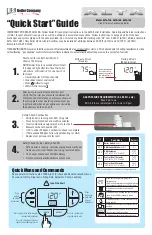
LAARS Heating Systems
Page 10
SECTION 2 Venting and Combustion Air
2.A General Venting Information
WARNING
Selection of improper vent materials for installations
that are installed in closets, or will be operated in high
ambient temperature levels, may lead to property
damage, personal injury, or death.
WARNING
Failure to use the appropriate vent material,
installation techniques, or glues and sealants could
lead to vent failure causing property damage, personal
injury or death.
WARNING
Use of cellular core PVC (ASTM F891), cellular core
CPVC, or Radel® (polyphenolsulfone) in non-metallic
venting systems is prohibited and that covering non-
metallic vent pipe and fittings with thermal insulation is
prohibited.
WARNING
All venting must be installed according to this manual
and any other applicable local codes, including but
not limited to, ANSI Z223.1/NFPA 54, CSA B149.1,
CSAB149.2 and ULC S636. Failure to follow this
manual and applicable codes may lead to property
damage, severe injury, or death.
If the system temperatures are unknown at the time
of installation, class IIC or higher venting material is
recommended.
This unit is certified to vent as a Category II (negative
pressure condensing) or Category IV (positive pressure
condensing) appliance. It may be installed with vent
materials meeting the standards listed in Table 5.
The vent can terminate through the roof, or through an
outside wall.
All installations must be done following the vent
supplier’s recommended installation techniques. If
these are not available, refer to the Manufacturer
recommendations for the material used.
2.B Vent and Air Pipe Material
This unit requires a special venting system. Refer to
venting supplier’s instructions for complete parts list and
method of installation. The manufacturers and product
lines listed in Table 3 and Table 4 have been tested
and authorized to safely operate with this equipment.
Suppliers of stainless steel and polypropylene venting
that are not listed on these tables are not permitted for
use with this appliance.
Do not mix venting suppliers and models in venting
systems. Failure to comply could result in personal
injury, property damage, or death.
Installations must comply with applicable national, state
and local codes.
2.B.1 Venting Requirements Unique to
Canada
These high efficiency boilers and water heaters are
Vent Category II and IV units. Per the requirements
of CAN/CSA-B149.1, only BH vent systems can be
connected to these units and such vent systems, either
ULC S636 certified stainless steel or other ULC S636
certified BH vent (eg. plastics) must be installed per the
vent manufacturer’s certified installation instructions.
It is the responsibility of the appropriately licensed
technician installing this unit to use ULC S636 certified
vent material consistent with the requirements as
described in the Venting and Combustion Air section.
Class I venting systems are suitable for gas-fired units
producing flue gas temperature of more than 135°C, but
not more than 245°C.
Class II venting systems are suitable for gas-fired units
producing flue gas temperatures of 135°C or less.
Class II venting systems are further classified into four
temperature ratings as follows:
A Up to and including 65°C / 149°F
B Up to and including 90°C / 194°F
C Up to and including 110°C / 230°F and
D Up to and including 135°C / 275°F
2.B.1.a Flue Gas Sampling Port -
It is also the responsibility of the installer to ensure that
a flue gas sampling port is installed in the vent system.
This flue gas sampling port must be installed near
the flue connection of the unit: within 2 feet of the flue
connection. There is no flue gas sampling port internal
to the unit, so one must be installed in the vent system















































